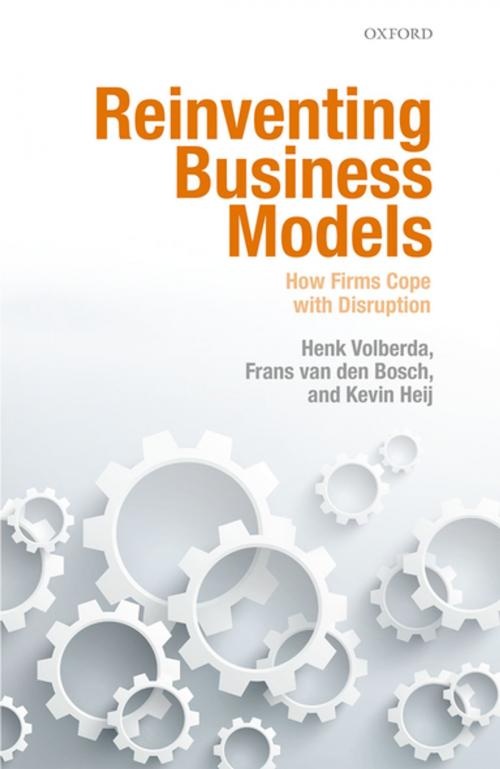Reinventing Business Models
How Firms Cope with Disruption
Business & Finance, Human Resources & Personnel Management, Organizational Behavior, Management & Leadership, Planning & Forecasting| Author: | Henk Volberda, Kevin Heij, Frans van den Bosch | ISBN: | 9780192509871 |
| Publisher: | OUP Oxford | Publication: | November 17, 2017 |
| Imprint: | OUP Oxford | Language: | English |
| Author: | Henk Volberda, Kevin Heij, Frans van den Bosch |
| ISBN: | 9780192509871 |
| Publisher: | OUP Oxford |
| Publication: | November 17, 2017 |
| Imprint: | OUP Oxford |
| Language: | English |
Although research on business model innovation is flourishing internationally, many important questions on the 'how', 'what', and 'when' of this process remain largely unanswered, particularly in regard to the role of top management. This book answers some of those pressing questions by taking a deliberately managerial perspective. Based on new and original findings derived from a survey among firms from various industries, and several case studies (including DSM, NXP Semiconductors, Randstad, and TomTom), the authors provide new insights into how and when managers can change a firm's business model. They turn their attention particularly to one key question: is it better to replicate existing models or develop new ones? Business model renewal is regarded as being especially vital in highly competitive environments. Nonetheless, whatever the environment, high levels of both replication and renewal will be key for a firm to succeed. The book looks at four levers that can be used by managers to innovate their business model: management itself, organizational structure, technology, and co-creation with external parties. It discusses the individual effects of these levers on business model replication and renewal. It also analyses specific combinations that strengthen business model innovation, including those which are technology oriented, internally oriented, externally oriented, and those which combine all of the levers in an integrated way.
Although research on business model innovation is flourishing internationally, many important questions on the 'how', 'what', and 'when' of this process remain largely unanswered, particularly in regard to the role of top management. This book answers some of those pressing questions by taking a deliberately managerial perspective. Based on new and original findings derived from a survey among firms from various industries, and several case studies (including DSM, NXP Semiconductors, Randstad, and TomTom), the authors provide new insights into how and when managers can change a firm's business model. They turn their attention particularly to one key question: is it better to replicate existing models or develop new ones? Business model renewal is regarded as being especially vital in highly competitive environments. Nonetheless, whatever the environment, high levels of both replication and renewal will be key for a firm to succeed. The book looks at four levers that can be used by managers to innovate their business model: management itself, organizational structure, technology, and co-creation with external parties. It discusses the individual effects of these levers on business model replication and renewal. It also analyses specific combinations that strengthen business model innovation, including those which are technology oriented, internally oriented, externally oriented, and those which combine all of the levers in an integrated way.















